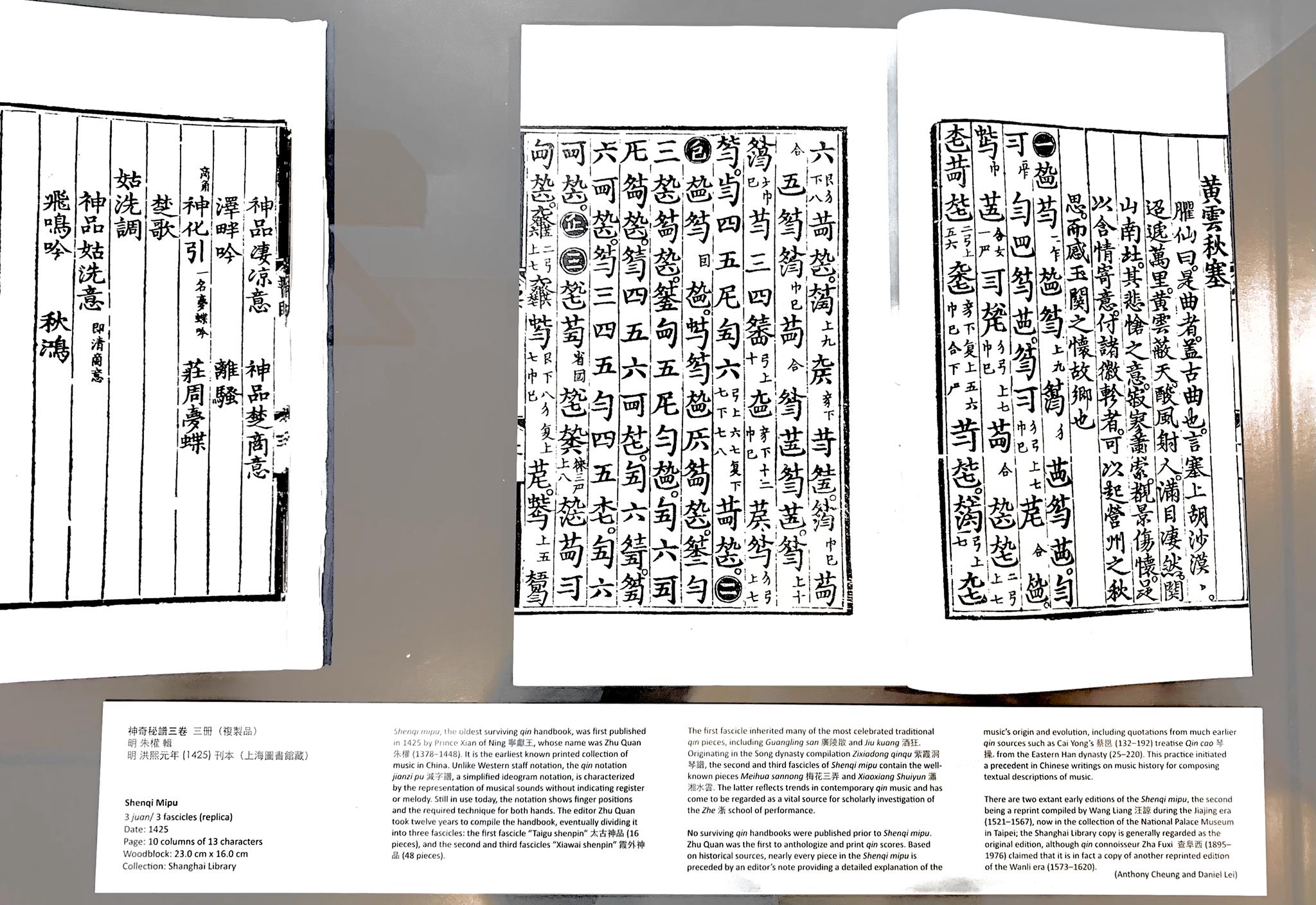Music in Facsimile
Shengqi mipu, the oldest surviving qin handbook and the earliest known printed collection of music in China, was first published in 1425.

Daniel Lei wrote the exhibition text for the "Music in Facsimile" at the HKU Music Library. The project was curated by Dr. Yang Yuenzhen of the Department of Music, The University of Hong Kong and supported by the HKU Libraries Preservation Centre.
Shenqi mipu, 3 fascicles (replica)
Date: 1425
Page: 10 columns of 13 characters
Woodblock: 23.0 x 16.0 cm
Collection: Shanghai Library
Shengqi mipu, the oldest surviving qin (Chinese 7-stringed zeither) handbook, was first published by Prince Xian of Ning 寧獻王 whose name Zhu Quan 朱權 (1378–1448) in 1425. It is also the earliest known printed collection of music in China. Unlike the Western staff notation, jianzi pu 減字譜, a simplified ideogram notation for the qin, is characterised by the representation of musical sound without indicating register or melody, but instead only finger position and the techniques of both hands, and this system has continued to the present day. The editor Zhu Quan took twelve years to compile the collection, and eventually divided the handbook into 3 fascicles: the first fascicle “Taigu shenpin (Master Pieces in Ancient Time 太古神品)” (16 pieces), and the second and the third fascicle “Xiawai shenpin (Master Pieces beyond the Haze 霞外神品)” (48 pieces).
The first fascicle has inherited many of the most celebrated traditional qin pieces including Guangling san (Melody of Gungling 廣陵散) and Jiu kuang [The Drunken Mad 酒狂]. Originating from the Song dynasty compilation Zixiadong qinpu 紫霞洞琴譜, noteworthily, the second and third fascicles of Shengqi mipu contain the well-known piece Meihua Sannong (Three Stanzas of Plum Blossoms 梅花三弄) and Xiaoxiang Shuiyun (Mist and Cloud over Xiaoxiang 瀟湘水雲). The latter reflects trends in contemporary qin music and has come to be regarded as a precious source available for further scholarly investigation of the zhe school 浙派 of playing.
No surviving qin handbooks were published prior to Shenqi mipu. Zhu Quan was the first who endeavours simultaneously to anthologise qin scores and printed them. Based on historical sources, almost every piece in the Shengqi mipu is preceded by an editor's note that furnishes a detailed explanation of the origin and evolution of the music, including quotations from much earlier qin scores, such as Cai Yong 蔡邕 (132-192) treatise Qin Cao 琴操, written in the Eastern Han Dynasty (25–220). This practice initiated a precedent in Chinese writings on the music history of composing text descriptions of music.
There are now two extant early editions of the Shengqi mipu, the second being a reprint compiled Wang Liang 汪諒 during the Jiajing era (1521–1567) of the Ming Dynasty which is now in the collection of the National Palace Museum in Taipei; the copy that the Shanghai Library holds is generally regarded as the original edition, although qin connoisseur Zha Fuxi 查阜西(1895–1976) has claimed that it is in fact a copy of another reprinted edition of the Wanli era (1573–1620).
